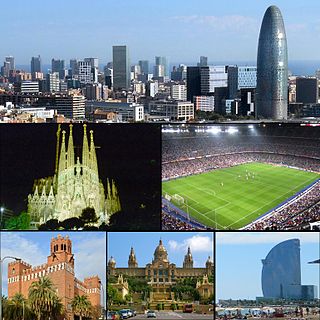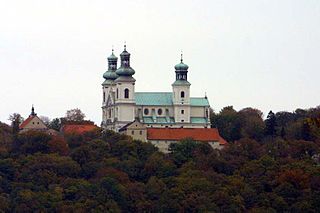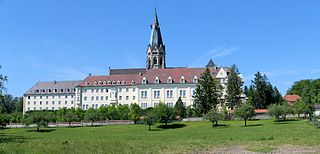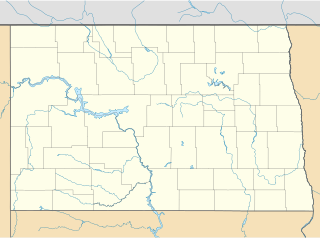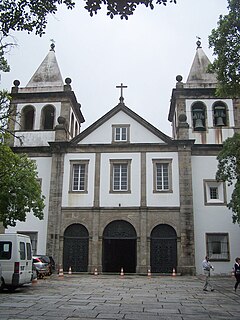| Abbey Church of Our Lady of Montserrat | |
|---|---|
| The Benedictine Abbey of Our Lady of Montserrat, Manila | |
 Façade of the Abbey | |
| 14°35′57″N120°59′35″E / 14.599113°N 120.992946°E | |
| Location | 638 Mendiola St., San Miguel, Manila, Metro Manila |
| Country | |
| Denomination | Roman Catholic |
| History | |
| Founded | 1895 |
| Founder(s) | Rt. Rev. José Deas y Villar, OSB |
| Dedication | Santo Niño de Praga Nuestra Señora de Montserrat |
| Consecrated | January 13, 1926 |
| Architecture | |
| Functional status | Active (Abbey and University Church) |
| Architect(s) | George Asp |
| Style | Neo-Gothic (exterior) Neo-Baroque (interior) |
| Completed | January 13, 1926 |
| Specifications | |
| Number of towers | 2 |
| Number of spires | 17 |
| Administration | |
| Archdiocese | Manila |
| Clergy | |
| Archbishop | Cardinal Luis Antonio Tagle |
| Abbot | Rt. Rev. Austin Cadiz, OSB |
| Prior | Very Rev. Fr.Angelo Legal, OSB |
The Abbey of Our Lady of Montserrat, or Manila Abbey, is a Benedictine men's monastery located on Mendiola Street in Manila, the Philippines. The monastery was founded by monks from Spain in 1895, in the final years of Spanish colonial era in the Philippines and is dedicated to Our Lady of Montserrat.
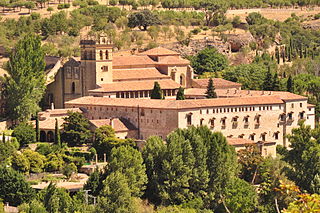
A monastery is a building or complex of buildings comprising the domestic quarters and workplaces of monastics, monks or nuns, whether living in communities or alone (hermits). A monastery generally includes a place reserved for prayer which may be a chapel, church, or temple, and may also serve as an oratory.

Mendiola Street is a short thoroughfare in San Miguel, Manila, Philippines. The street is named after Enrique Mendiola, an educator, textbook author and member of the first Board of Regents of the University of the Philippines. As a street close to Malacañang Palace, the President of the Philippines' official residence, it has been the site of numerous and sometimes bloody demonstrations.

Manila, officially the City of Manila, is the capital of the Philippines. It is the most densely populated city proper in the world. It was the first chartered city by virtue of the Philippine Commission Act 183 on July 31, 1901 and gained autonomy with the passage of Republic Act No. 409 or the "Revised Charter of the City of Manila" on June 18, 1949. Manila, alongside Mexico and Madrid are considered the world's original set of Global Cities due to Manila's commercial networks being the first to traverse the Pacific Ocean, thus connecting Spanish Asia with the Spanish Americas, marking the first time in world history when an uninterrupted chain of trade routes circled the planet. Manila has been damaged by and rebuilt from wars more times than the famed city of Troy and it is also the second most natural disaster afflicted capital city in the world next to Tokyo yet it is simultaneously among the most populous and most wealthy cities in Southeast Asia.
Contents
- History
- Origins
- American period
- Present condition
- National Historical Commission marker
- Gallery
- References
- See also
The resident monks, which belong to the Philippine Pro-Province of the Subiaco Cassinese Congregation (a part of the Benedictine Confederation) also operate San Beda University on the abbey's grounds. [1]
The Subiaco Cassinese Congregation is an international union of Benedictine houses within the Benedictine Confederation. It developed from the Subiaco Congregation, which was formed in 1867 through the initiative of Dom Pietro Casaretto, O.S.B., as a reform of the way of life of monasteries of the Cassinese Congregation, formed in 1408, toward a stricter contemplative observance, and received final approval in 1872 by Pope Pius IX. After discussions between the two congregations at the start of the 21st century, approval was given by Pope Benedict XVI in 2013 for the incorporation of the Cassinese Congregation into its offshoot, the Subiaco Congregation. The expanded congregation was given this new name.
The Benedictine Confederation of the Order of Saint Benedict is the international governing body of the Order of Saint Benedict.

San Beda University, , and is a private Roman Catholic university run by the Benedictine monks in the Philippines. Its flagship campus which provides tertiary education is situated in Mendiola, Manila. It has an affiliated campus in Taytay, Rizal which only provides elementary and high school. The Benedictine college in Alabang, Muntinlupa known as the San Beda College Alabang is an autonomous institution despite being an affiliate of San Beda University.

